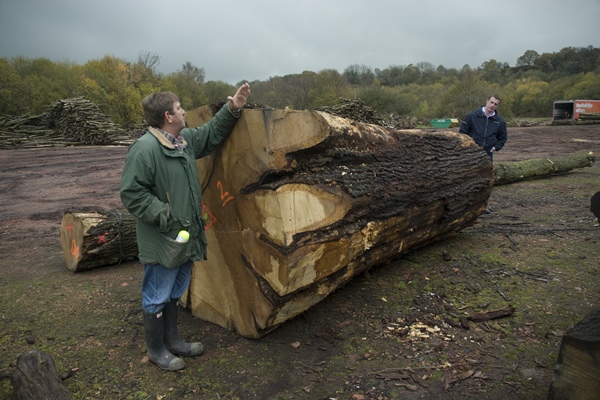How Does Oak Flooring Get From An Oak Tree To Your Home?
6th Jan 2015 @ 17:50
It all begins by felling a suitably sized oak tree. All of the branches are removed from the main trunk of the tree, to produce what is known as an oak round. The oak round is then made available to various sawmills, flooring producers and timber merchants, where the best is selected for their purposes.
The process of choosing a good round for the flooring can be seen as a mixture of skill and luck. This is because only the two cut ends, and how many branches were removed, can be seen. Density, evenness and spacing of the growth rings are the key points to look out for.
With the appropriate round selected, it can now be taken away for processing. Dependant on what type of cut is required, the round is sliced into 28mm thick layers and then left to air dry. This process can take between 3 months and 2 years.

Once the oak has been left for an the required length of time, the oak is then placed into a kiln for an additional 6 weeks. This ensures the moisture content of the wood is dried down to an appropriate level.
With the oak now dry; it is processed into the required thickness of board, with the stress grooves routed, tongues and grooves added and the boards planed and sanded.
The newly produced boards can now go through the final stage - the grading. For the grading process, the boards are separated dependant on their range of knots and character within the board. Boards with a large amount of knots, cracks, shakes, etc. are classified as the barn grade. Boards with occasional knots of varying sizes, and some shakes are classed as Character. Next up is the select grade, which is a finer version of the character, with far fewer knots. Finally comes the prime which is free from the knots of other grades.
If you would like to discuss any aspect of oak flooring with us, please give us a call on 01538 304584.




Add a comment